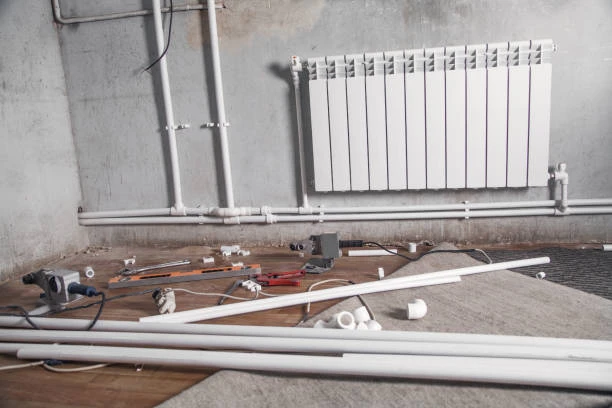In recent years, (Polypropylene Homopolymer) PPH fittings have emerged as a groundbreaking innovation in plumbing technology. Known for their high resistance to chemicals, low weight, and ease of installation, PPH fitting have transformed how plumbers and engineers approach piping systems. With the growing demand for durable, environmentally friendly, and cost-effective solutions, it’s no surprise that PPH fittings are quickly becoming the future of plumbing.
What Are PPH Fittings?
PPH fitting use polypropylene homopolymer, a type of plastic known for its strength and chemical resistance. This thermoplastic material finds extensive use in plumbing for applications that require durability and safety. Available in various forms, including elbows, tees, and reducers, PPH fitting meet the demands of both residential and industrial piping needs.
Historical Context and Development of PPH Fittings
Traditionally, materials like copper, PVC, and other metals dominated the plumbing industry. However, as the demand for more sustainable and resilient materials grew, PPH fitting gained popularity due to their unique properties. Over the years, advancements in thermoplastic technology have made PPH fitting a superior alternative to conventional materials in many applications.
Why PPH Fittings Are the Future of Plumbing
The future of plumbing looks bright with PPH fitting at the forefront. These fittings offer unmatched benefits, particularly in environments exposed to chemicals and temperature fluctuations. Their high melting point and non-corrosive properties make them ideal for industrial settings where other materials might fail.
Advantages of Using PPH Fittings in Plumbing
Lightweight and Easy Installation
One of the standout features of PPH fittings is their lightweight nature, which makes them easy to handle and install. Unlike traditional metal pipes, which require extensive labor, PPH fitting simplify the installation process, saving time and money.
Chemical and Corrosion Resistance
PPH fittings are resistant to a wide range of chemicals and don’t corrode over time. This property especially benefits industries like chemical manufacturing, where pipes encounter harsh substances daily.
Environmental Benefits of PPH Fittings
In today’s world, sustainability is more critical than ever. PPH fittings are eco-friendly as they can be recycled, reducing waste. Unlike PVC and metal, PPH fitting have a lower environmental impact due to their efficient manufacturing process and longer lifespan.
Common Applications of PPH Fittings
PPH fittings are versatile and suitable for various applications. Here are some of the most common uses:
- Residential Plumbing: Ideal for hot and cold water systems in homes.
- Industrial Applications: Frequently used in factories and plants where pipes encounter chemicals and high temperatures.
- Chemical Handling Systems: Due to their chemical resistance, PPH fittings are widely used in facilities that handle corrosive chemicals.
Comparing PPH Fitting with Other Plumbing Materials
PPH vs. PVC
While both materials are popular in plumbing, PPH offers better chemical resistance and durability under high temperatures compared to PVC.
PPH vs. PPR
People often compare PPH and PPR (Polypropylene Random Copolymer) for their respective benefits. PPH tends to have a higher temperature resistance, making it ideal for applications that require durability under heat.
PPH vs. Metal
Metal pipes, though robust, are heavy and prone to corrosion. PPH fittings are lightweight, corrosion-resistant, and often more cost-effective over time.
Installation and Maintenance of PPH Fittings
Installing PPH fittings is straightforward, requiring fewer tools and less effort than traditional materials. To maintain their longevity, regular inspection is recommended, especially in industrial environments.
The Future of Plumbing with PPH Innovations
Technological advancements continue to make PPH fitting an attractive option. With enhanced designs for improved flow and higher resistance levels, the plumbing industry will likely experience a significant shift toward PPH-based systems in the coming years.
How to Choose the Right PPH Fitting
When selecting a PPH fitting, consider the size, type, and intended application. High-quality fittings from reputable brands are often marked with certifications to ensure they meet industry standards.
Safety and Standards in PPH Fitting
PPH fitting adhere to strict standards to ensure safety and reliability. Look for certifications when purchasing PPH products, especially for critical applications like chemical transport and high-pressure systems.

Cost-Effectiveness of PPH Fitting
Although the upfront cost of PPH fitting may be higher than some alternatives, their longevity and low maintenance requirements result in substantial long-term savings. This cost-effectiveness is a primary reason behind their growing popularity.
Case Studies: Success Stories Using PPH Fittings
Many companies have switched to PPH fitting and experienced increased efficiency, reduced downtime, and lower maintenance costs. Industries such as pharmaceuticals, food processing, and water treatment have found immense value in PPH piping systems.
Conclusion
As the plumbing industry evolves, the demand for materials that offer durability, sustainability, and cost-efficiency will continue to rise. PPH fitting meet these needs with exceptional performance, making them an ideal choice for both residential and industrial applications. The future of plumbing is not just about moving water from one place to another but doing so in a way that’s eco-friendly, reliable, and efficient. PPH fittings are a perfect example of how the industry is moving forward.
FAQs
- What are PPH fitting used for? PPH fittings are primarily used in plumbing systems for their high resistance to chemicals, lightweight nature, and durability. They are suitable for residential, industrial, and chemical applications.
- Are PPH fitting better than PVC? While both materials have their advantages, PPH fitting offer higher chemical and temperature resistance, making them preferable for applications requiring durability under harsh conditions.
- How long do PPH fitting last? PPH fittings are designed for long-term use, often lasting several decades with minimal maintenance due to their corrosion resistance and strength.
- Are PPH fitting eco-friendly? Yes, PPH fittings are recyclable and manufactured with a lower environmental impact compared to other materials like PVC and metal.
- What industries benefit most from PPH fitting? Industries such as pharmaceuticals, food processing, chemical manufacturing, and residential plumbing benefit greatly from the durability and efficiency of PPH fitting.

















